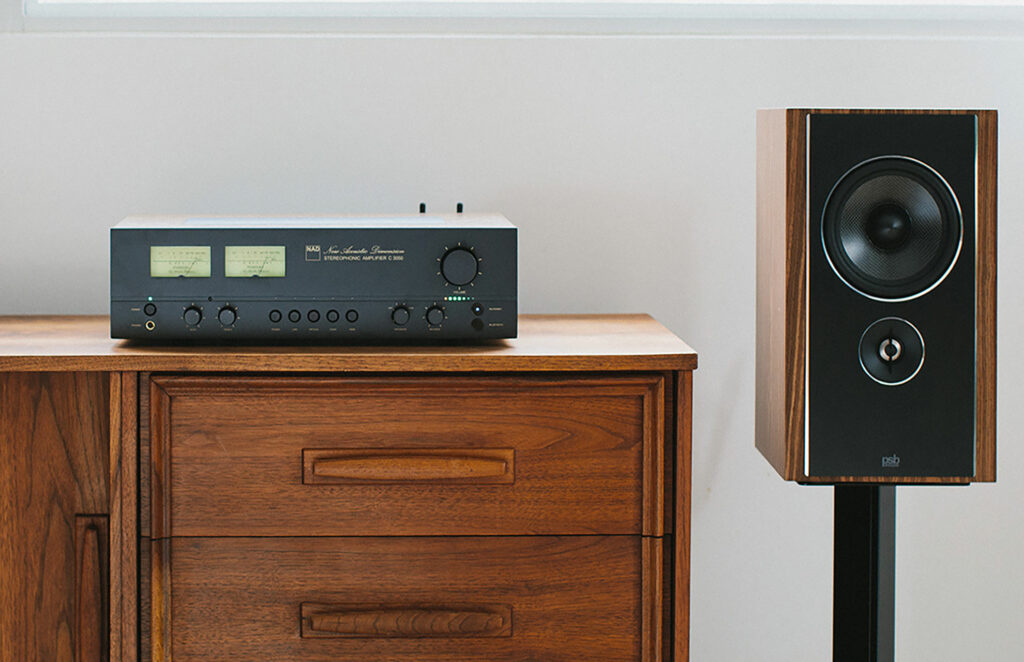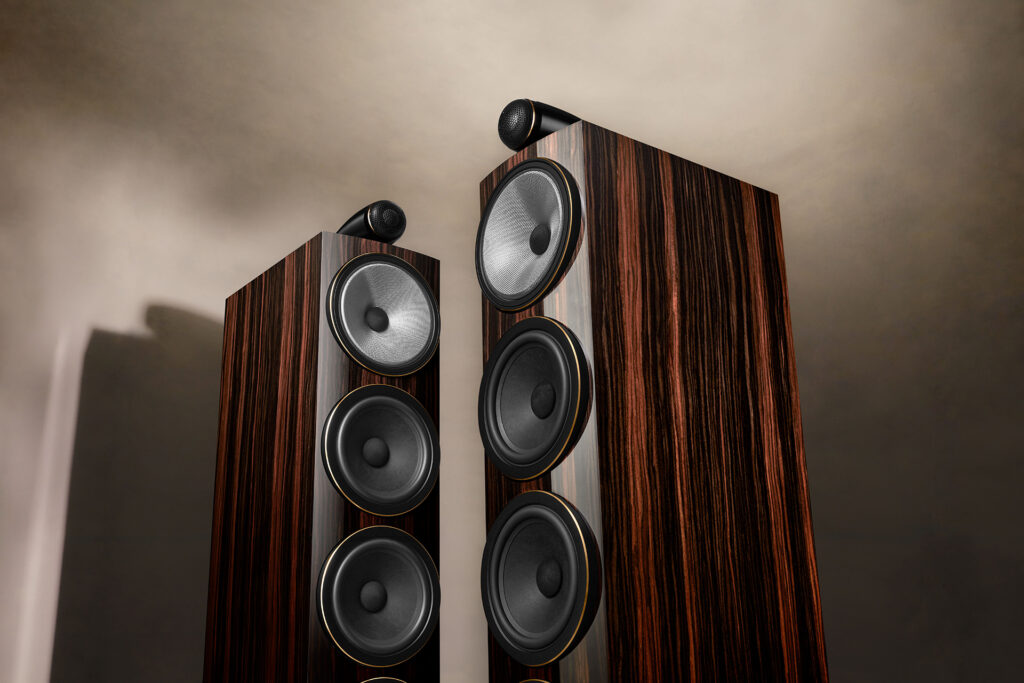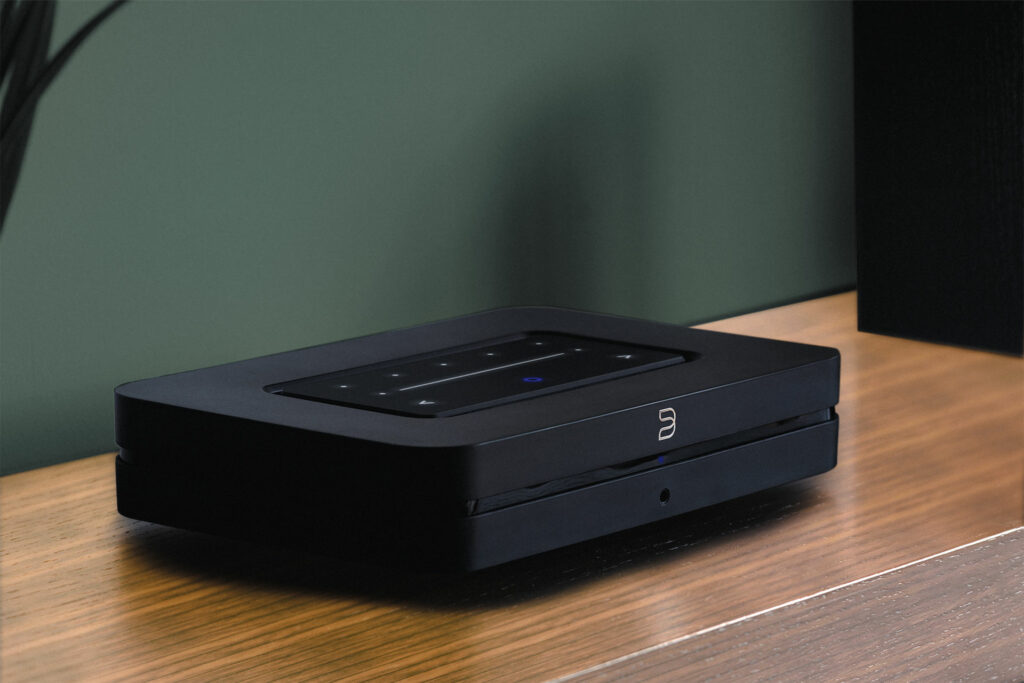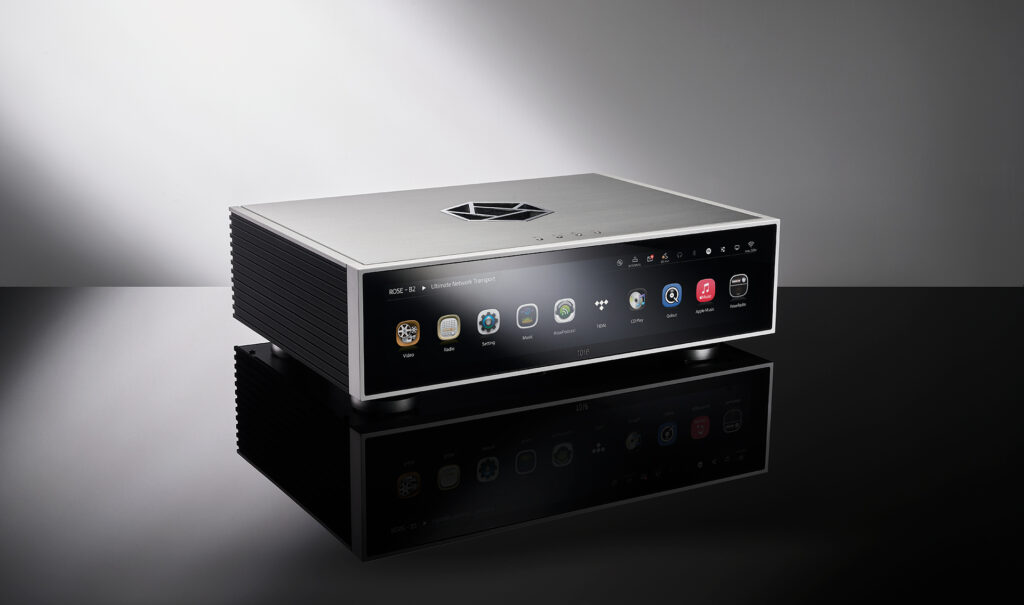Anyone who has had even a minimum exposure to the audiophile hobby knows how expensive it can be. Let’s face it, the gross majority of non-audio hobbyists would think anyone who would spend over one million dollars on a stereo system was certifiably insane. Yet there are those who willingly and enthusiastically make such huge investments in their systems. What many may find surprising is that our favorite hobby can also be surprisingly cost-effective – especially given the sonic capabilities of modern audiophile gear. Still, however, we all need to pay attention to cost at some level or another. Well, those with eight-figure trust funds may not, and someone who just won the Powerball might not care, but for the rest of us, yeah, we need to watch how much we spend. A really valid question, therefore, is how do we go about budgeting for a rock-solid audiophile system?
There are two more questions we might ask on the path to an answer. One, are we building a complete system from scratch? Or two, are we simply looking to up the ante on an existing component? Obviously, replacing one component at a time is worlds easier, so let’s start with the more difficult question. If we are going to build a complete audiophile system from the ground up, how do we best do so?

Planning For an Audiophile System from Ground Zero
It is a given that our hobby is one financed from disposable income. We are not going to miss a house payment or defer a family member’s educational needs in order to afford a better amplifier. At least, I hope not. It therefore stands to reason that the cost of any audiophile system is conditional on the family’s other, more immediate financial obligations. We buy stereo gear when it is easily affordable and the money spent will essentially not be missed once deducted from the checkbook.
One question I hear asked quite often involves the allocation of funds, given a fixed amount of money. Percentage-wise, I am sometimes asked how much should be devoted to digital audiophile sources, turntables, power amplifiers, floorstanding speakers or bookshelf speakers, quality cables, sturdy AV equipment racks and all the myriad of fun little thingies we can curate for a stereo system. This is a multi-faceted question with a number of options. My first question would be the main use of the system. Is it to be a dedicated two-channel system, or something used in the family room for movies and music? We likely should stick to the first option for now: building an audiophile system. Let’s start with some options at a variety of price points. I could cite an endless variety of examples, but for simplicity’s sake, why not stick to a $2,500 and a $7,500 system with solid state circuitry?
- Because of the myriad of brands, I will skip over Chinese, or Chi-Fi, audio gear. Brands like Topping, for instance, offer a surprisingly respectable sonic quality for a very nominal cost. I’ve heard systems with a total cost of about $1,000 and thought they sounded really nice. Consequently, anyone who is interested in building an audiophile system and has a limited budget might want to investigate Chi-Fi.
- For a total system cost of about $2,500, we could start with the NAD C3050 (read review here)at a cost of $1,599. This device was our Component of the Year in 2023 and has grown in popularity since. For digital fans, this integrated streaming amplifier and a set of speakers is about all anyone would need for a nice-sounding, very versatile audiophile system.
- Turning to speakers, the industry is awash with brands in the $750 to $1,500 price range that offer surprisingly respectable sonics. One such choice is the three-way floorstanding Elac DF52 priced at $798 for the pair. A second option is the PSB Alpha T20, a two-way floorstanding speaker system. Priced at about $850, this speaker system would complement the NAD C3050 quite well. This even leaves a little left over for some speaker cables and would provide a wonderful and quality musical experience.
- Stepping up the spend to a budget of $7,500 will make the game much more interesting.This spend allows for a higher level of components with better capabilities and far superior sonic performance. There are a wealth of possibilities with options for both digital and analog sources, integrated amplifiers, floorstanding speakers and quality cables.
- The heart of this system could reside with something like the PS Audio Strata MK2 integrated amplifier. Priced at $3,499, it features 150 WPC, a full-featured DAC, a MM and a MC phonostage, and much more.
- A Bluesound Node 2024 (read review here) would be a superb choice for a digital streaming device. It has the ability to stream multiple services such as Qobuz, Tidal, Amazon Music, Apple Music and many more. Cost? $649.
- The Pro-Ject Debut Carbon (read review here) at $599 would be a wonderful-sounding turntable, which comes with both a tonearm and a cartridge. This is actually a rather nominal investment for a very nice turntable. Best of all, it will allow the user to enjoy vinyl in addition to digital.
- Rounding out the system are the SVS Prime Pinnacle (read review here) three-way floorstanding speakers. Priced at just under $2,000 per pair, these speakers would perform like rock stars in this system.
- Total spend for this hypothetical system? These components come in at about $6,750, which leaves about $750 for interconnects and speaker cables. And best of all, it will provide many hours of musical enjoyment.

Should I Divide Up My Budget by Percentages or Just Wing It?
It would be so very helpful in this discussion if there were a set of hard/fast rules on how to allocate available funds for a complete stereo system spend. Unfortunately, things are just not so simple in the real world. It seems easily reasonable to allot a sizeable percentage of a system’s total budget to the speakers. Afterall, these transducers are the only part of an audio system that actually converts an electrical signal to music. In fact, one recommendation is to allow as much as about 40 percent of the total budget for speakers alone. And that is fine, I suppose, but absolutely not a rule carved in Paleolithic granite. Regardless of how the total spend is portioned out, having everything on the same level of quality and performance will yield a balanced system with sonics which may be very highly enjoyed. As such, I prefer to have all parts of my system on the same level of quality and performance. However the percentage of spends works out is perfectly fine by me. I am looking for system synergy, not an adherence to some predetermined allocation of funds.

How Best to Replace One Audiophile Component or Part of a System
At some point, the widely-used phrase the Law of Diminishing Returns will come into play. As it applies to audio, this is a dictum which essentially states that at some point, spending more money will not yield a better-sounding stereo system. It is up to the user to determine on their own when, or if, a diminishing return becomes realistic. For my own purposes, I have always chosen a different route.
I have always had as a goal ensuring that my system is consistent from start to finish. If I have world-class $10,000 and up electronic components, I would hardly attach them to an entry-level pair of bookshelf speakers. I spent almost 10 years eliminating the proverbial weak link in the chain and I was sonically rewarded for doing so. But this is a dedicated, often long-term effort, and one which might even be never-ending and quite expensive. My point is this: as you plan your system choices, choose those which complement the rest of your system. However the percentages work out is basically okay. And if you are planning to step up the game, as it were, then plan for that as well.
There is nothing wrong with investing in a much better set of speakers with the expectation of upgrading the amp and sources as one’s budget allows. Plus, this strategy gives you something to look forward to in the future. And you will also have the highest level of sonics your system can produce, given the existing electronics. In other words, much better speakers will not hold the components themselves back, as opposed to lesser-quality speakers paired with much higher-quality sources and amplification. However the upgrade path is followed is a personal decision, and there are no hard and fast rules on how to embark upon this task. Basically, it’s user’s choice.
If you are absolutely content with your system as it is, congratulations, you may enjoy sonic fulfilment. Most of us, however, fight the impulse to keep upgrading, as this is the presumed path to sonic nirvana. In the real world, how much money is available for any one component change or upgrade will determine what is replaced and when. If your heart is set on a $10,000 set of speakers and your available spend is only $5,000, then you must obviously keep saving or find a different set of speakers.

The Difficulty in Justifying Our Audiophile Purchases
Building an audio system can be a highly entertaining enterprise. Many audiophiles find the process of demoing, evaluating and price negotiating to be a fun and intrinsic part of the hobby. Others sometimes find this process somewhat tedious. We tell ourselves we have the available funds, regardless of how much those funds may actually be, and yet, we very often feel circumspect, perhaps even guilty for considering a new whatever. And for those with a family who very rightfully and absolutely come first, deciding to purchase new equipment becomes even more difficult. I am sure if an audiophile could afford one or the other – a new streaming device or a new dress for their daughter’s big dance – well, the dance would certainly get the nod. And, of course, there is the ever-lurking Law of Diminishing Returns whispering in our collective ears, “You don’t need that!”
When the opportunity arises and the justification process is assuaged, there is the difficult process of assessing what is the best choice. It is generally believed that, as a system’s total cost rises, it becomes necessary to spend substantially more money on sonic improvements. For instance, if the total system cost is $5,000, a new component costing $3,000 will very likely improve the sonics quite a bit. However, a $3,000 spend on a $500,000 system will make very little difference, and may actually be more harmful than helpful. So always keep in mind that, as the system cost goes up, in most cases so does the level of spend needed for significant improvements.
There exists a certain anxiety in buying a new component, which also is more expensive than current components. I once was buying a new preamp. This preamp was substantially more than any one component I had purchased up to that point. But I had firmly decided I was going to significantly improve my system and this preamp was the start of my journey. I had the funds with no foreseeable fiscal impediments on the horizon. My hands probably trembled as I wrote the check. But write it I did and, when the new preamp came in, I was so very captivated by its arrival, the purchase cost was suddenly a distant memory. Buying new gear will always cause a certain level of trepidation. It is simply human nature. As audiophiles, we all have better sound as a goal. How much we choose to spend to obtain improvements will vary. Irrespective of how the conclusion is reached, an upgrade expenditure will very likely be a difficult decision to make. Just as with my preamp, however, once the new toy arrives, cost is typically very quickly forgotten.

Final Thoughts on Planning for the Cost of an Audiophile System …
My own personal path has always been to forego typical convention. I have never paid any attention to investing a percentage of my system spend one way or another. I have never worried about the Law of Diminishing Returns, either. If I could afford the new whatever (fill in the blank), I moved forward. If not, I waited.
I have seen some really fantastic gear come through my audiophile listening room for review and I wanted, perhaps even desperately wanted, several of the components I was so very fortunate to temporarily evaluate. But I am also very happy with my system as it is, right now, today. And as such, those review samples were therefore lovingly and painstakingly returned to the manufacturer. Will this contentment last forever? Of course not. Sooner or later, I’ll get the urge to upgrade something. And then the fun begins yet again. My conversation with myself on why, or even if, I am justified in making any purchase is a difficult one to have. A purchase, I might add, my better judgement tells me I do not in any conceivable universe really need.
It only makes sense to have a plan if the upgrade process is of any interest. We are constantly bombarded by the new products manufacturers develop. Most of them seem so wonderful our job of selling ourselves becomes decidedly simple. And after all, this is what manufacturers are trying to do – help us convince ourselves the new whatever is a must have. How and if we decide to do so is a decision we must all make on our own. Whether it is done by the allocation of a percentage of the available spend, or just winging it, is a decision we all must make based on what is best, and, what our finances will allow. In the end, our goal is to have an audiophile system which brings us joy. A system with which we can enjoy our favorite songs. Ours is a hobby best described as being fun and entertaining. However we arrive at fun and entertaining, whether a difficult road or an easily simple path is only the beginning of the story. The fortuitous outcome is how much we enjoy one of our favorite pastimes, listening to music.
What is your process for upgrading? Do you use a percentage system to allocate for your system? When do you upgrade? How often do you upgrade? What would be your budget if you started over from scratch or started a new system in another room? We always love to hear from you. Your comments will be approved and posted quickly.




Synergy is the key. And getting enough experience along the way to know what sound you enjoy. Some love a laid back full sound they can enjoy for hours while others may like a bright, more lively sound that they only listen to for a hour at a time before their ears get fatigued. One interesting way to upgrade today is to buy a low cost streamer, then later buy a better DAC. If you can feed the DAC asynchronously (USB or I2S) and can do the proper settings, the better clock in the more expensive external DAC will do the “driving” offering better authentic sound. And one way to “upgrade” for free is to move your speakers, adjusting the distance to walls and any tow-in you have.
I have settled on staying behind the curve. After 54 yrs in this hobby I look to previous models selling at a discount or the used market for
most everything I’m interested in. I have multiple background systems built from chi-fi components which has been fun with a minimal expense. I need music everywhere but I don’t care for the isolation of headphones.
We just bought a two year old Mercedes EQS with 3 years of warranty, 4 new tires and 15,400 miles on it for about 70% off retail in 2023. It’s basically an electric, S-Class SUV that is smoother than a Rolls for the price of Hyundai.
We all are going to need to find value when we can, where we can.
Sounds like you are well on your way!